木星 ALPO-Japan Latest

Jupiter Image 2013/11/04(UT)
米山誠一,石橋力
Gary Walker,Trevor Barry
G.Walker,S.Yoneyama,T.Ishibashi,T.Barry
|
Gary Walker(355mm SC & 254mm APM) |
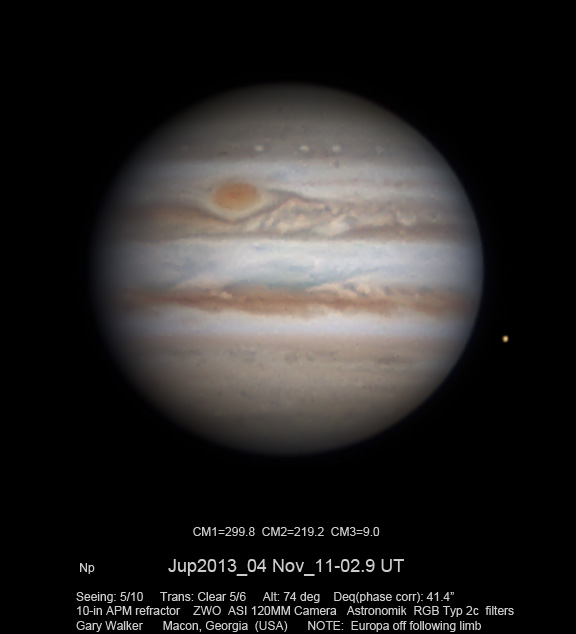 [Gary Walker:Georgia:USA]
[Gary Walker:Georgia:USA]
|
Seiichi Yoneyama(248mm Newton) |
冬型の気圧配置となり、シーイングが悪化しました。
GRSの経度は、ほぼ200度まで後退している様に見えます。
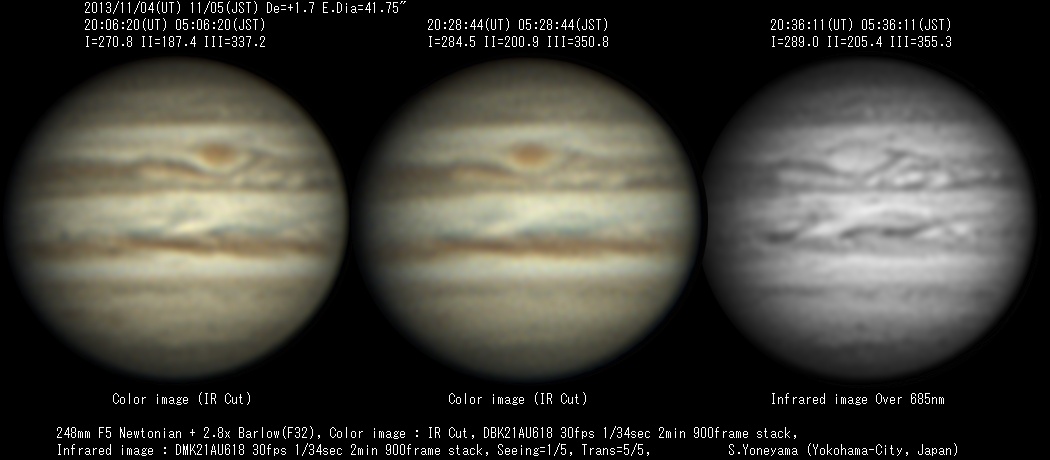 ≪神奈川県横浜市 米山誠一≫[Seiichi Yoneyama:Kanagawa Japan]
≪神奈川県横浜市 米山誠一≫[Seiichi Yoneyama:Kanagawa Japan]
|
T.Ishibashi (310mm Reflector) |
目では6/10のシーイングかと思いましたが、細かい揺れがあり細部は出ませんでした。
RS前後のSEBの白斑群が目立ちます。NEBは細いですが、EZはフェストーンなど活発のようです。
北極付近は暗く見えています。
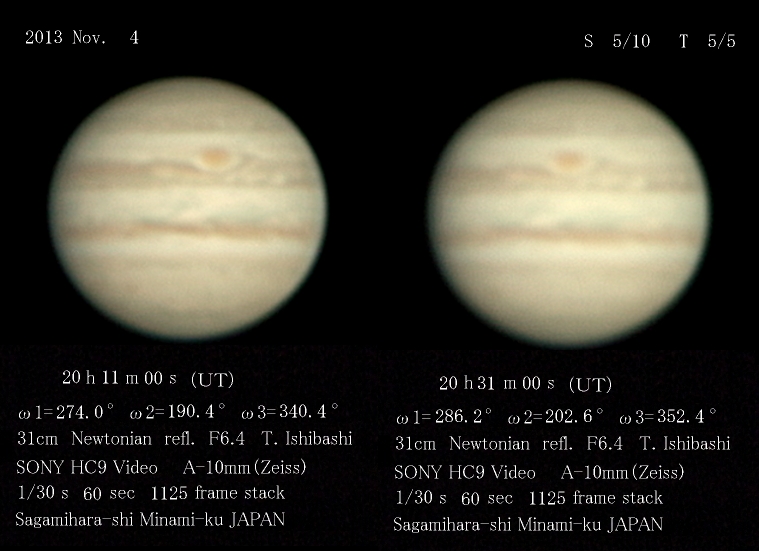 (Tutomu-Ishibashi Kanagawa-P Japan)
≪神奈川県 相模原市 石橋力≫
(Tutomu-Ishibashi Kanagawa-P Japan)
≪神奈川県 相模原市 石橋力≫
|
Trevor Barry(406mm Newtonian) |
Imaged Jove this morning in reasonable seeing for the alt.
Over the last several years all of my IR data has been captured at 807nm with a Astronomik Planet Pro IR filter with either my Flea3 FW or Flea3 GigE cameras.
More recently I also purchased the Astronomik Planet Pro 742nm IR filter, mainly for Saturn to get higher frame rates.
This morning the seeing was quite stable so I captured successive IR data sets, 742nm, 807nm, 742nm, 807nm with my new ASI 120MM camera which,
according to the spec's would seem to suffer into the IR compared to my Flea3.
I have attached the the final two data sets. Regardless of the filter I am using I always like to go with a histo of approx 90%.
In this instance the 742nm had a histo of 89%, Gain=78 at 60 FPS. The 807nm had a histo of 91%, Gain=100 at 47 FPS.
The processing for each data set was identical.
Disregarding the brightness of the images and concentrating on the actual detail, it seems that most of the detail in the 742nm image is also visible in the 807nm image,
that said, with this particular camera I am inclined to go forward with the 742nm filter.
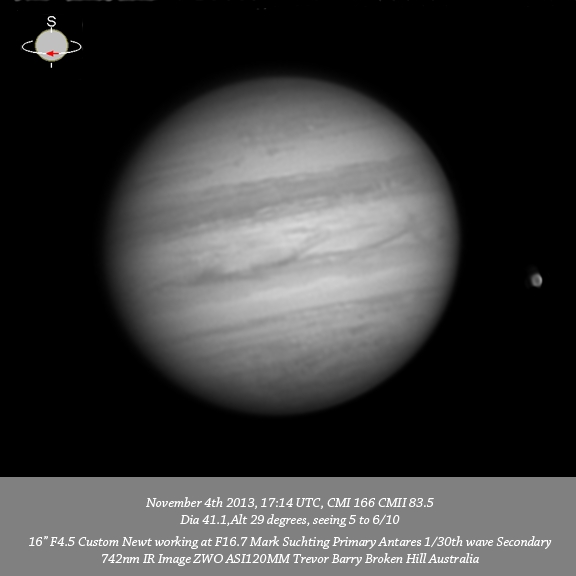
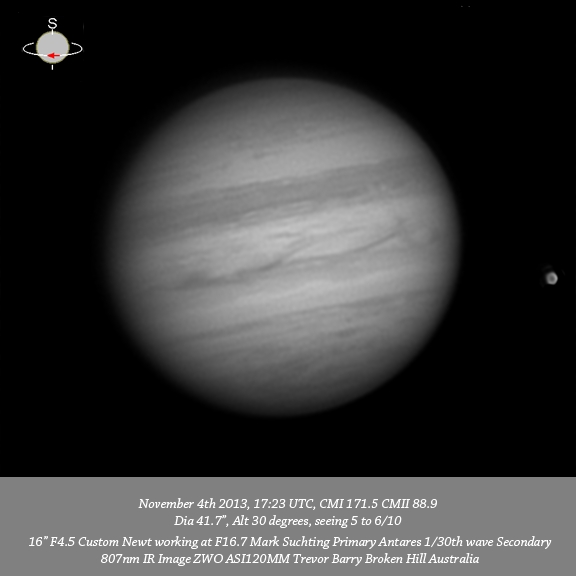
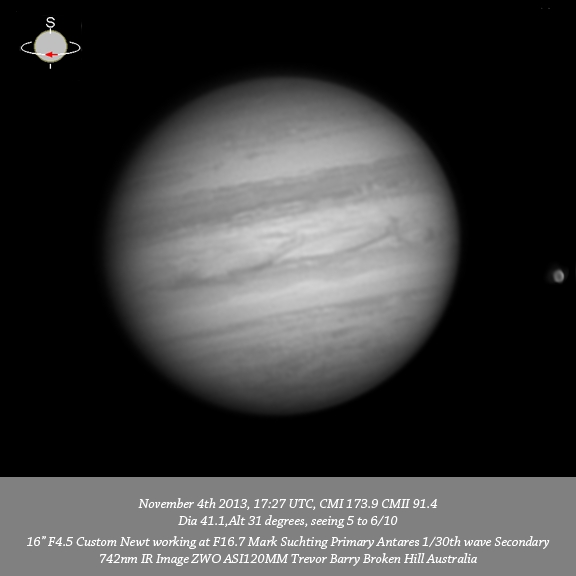 [Trevor Barry:Broken Hill:Australia]
[Trevor Barry:Broken Hill:Australia]


[Gary Walker:Georgia:USA]
≪神奈川県横浜市 米山誠一≫[Seiichi Yoneyama:Kanagawa Japan]
(Tutomu-Ishibashi Kanagawa-P Japan) ≪神奈川県 相模原市 石橋力≫


[Trevor Barry:Broken Hill:Australia]
 ALPO-Japan Latest
ALPO-Japan Latest

 Jupiter Section
Jupiter Section